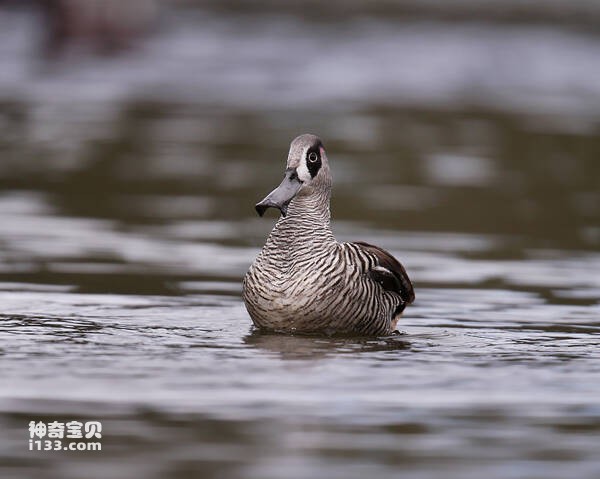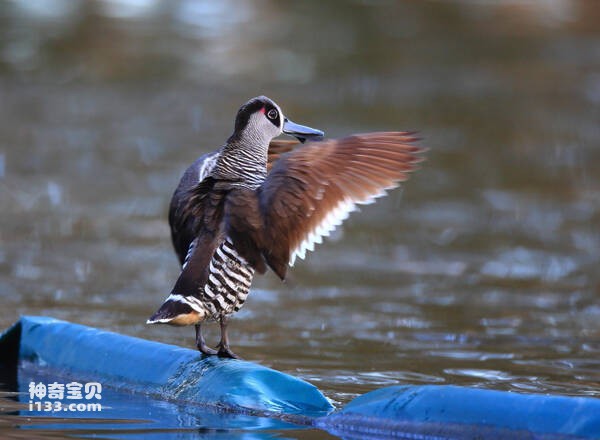Malacorhynchus membranaceus
IUCN
LCBasic Information
Scientific classification
- name:Malacorhynchus membranaceus
- Scientific Name:Malacorhynchus membranaceus,Pink-eared Duck
- Outline:Waterfowl
- Family:
Vital signs
- length:36-45CM
- Weight:About 375g
- lifetime:No textual research information is available
Feature
It has a super large beak and a super short tail, with a small patch of pink spotted feathers behind the eyes
Distribution and Habitat
It is distributed in Australia, mainly in the southwest and southeast central regions.
The red-eared duck often haunts woodland near water sources in wet areas and is particularly fond of shallow ponds. It is usually temporary in open areas of fresh or brackish water. Birds, which live mainly inland, can also travel long distances to the coastal coast in search of water during severe drought years.
Appearance
The red-eared duck is 36-45 cm long and weighs 375 grams. The brown duck has an unusually large beak and a very short tail that seem out of proportion to its smaller size. This is also a major sign that the species is not easily confused with other ducks. The head of the adult duck has several isolated color areas, and the head cover and neck are grayish-brown; Dark brown around the eyes and extending to the back of the neck; The eyes are white first, and the iris is surrounded by a narrow circular white ring. Behind the eyes, there is a small spot of pink feather, so named for its resemblance to the ears; The cheeks, sides of the neck, and front chest are fine gray; The abdomen is white, and the wings have many long markings of dark brown and white; The tail rump is pale yellow, the top tip is brown, and the tail cover is dark brown.
Details
The red-eared Duck (Malacorhynchus membranaceus) is known as Pink-eared Duck, without subspecies.

Red-eared ducks usually live in small flocks. However, in some important areas where bird activity is concentrated, they also gather in large groups, often with other species, especially the grey teal. When the red-eared duck searches for food, it uses its small paddle-like beak to swing back and forth in shallow water, a highly specialized long, leafy bill that filters plants and small animals, even plunging its entire head and neck into the water. The stay on the shore is brief, roosting on a tree stump on the shore.

Red-eared ducks can breed all year round, as long as there is sufficient rainfall. This is a monogamous species whose mating relationships can last up to one breeding season. Build a large, round, covered nest and place it in grass or tree holes near the water, also using the old nests of other aquatic species, such as coots and water chickens. Sometimes they occupy the nest of another species, evicting the owner and laying their own eggs there. Several species of birds sometimes lay their eggs in the same nest, and 60 eggs were once found in a hole in a tree. When the conditions are right, the female will lay five to eight eggs very quickly. Female ducks incubate their eggs for only 26 days.
Listed on the International Union for Conservation of Nature (IUCN) 2012 Red List of Threatened Species ver3.1 - Low Risk (LC).
Protect wild animals and eliminate wild meat.
Maintaining ecological balance is everyone's responsibility!








